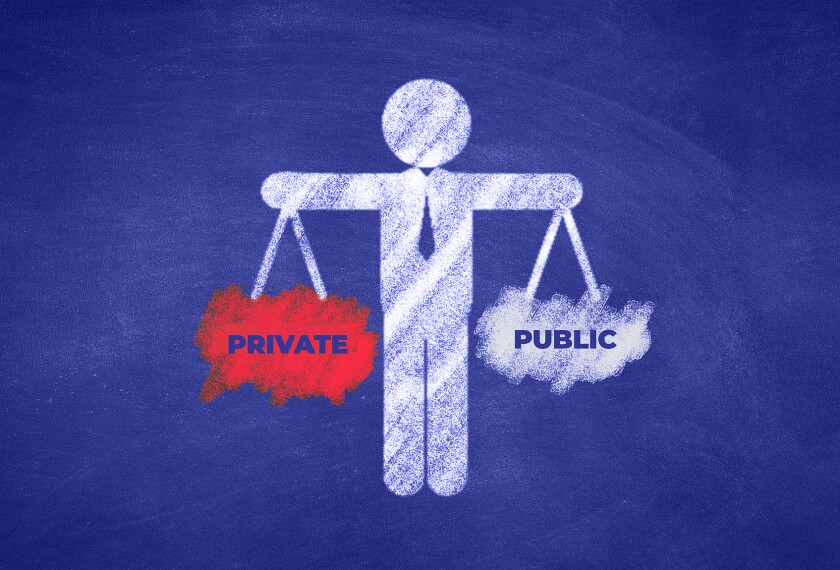Leading schools through a politically tense era means principals, superintendents, and teachers must learn how to de-polarize conflicts. These could range from divisions among students and parents about the upcoming presidential election to local debates around cellphone restrictions, book bans, or gender-neutral bathrooms.
Schools have always been affected during periods of polarizing conflicts, but due in part to social media, the pitch and intensity of these conflicts may seem larger these days. It’s also unlikely for these polarizing disagreements to disappear any time soon.
“Disagreement is normal,” said Katy Anthes, a former education commissioner in Colorado who is now the director of the FORWARD Initiative at the Public Education and Business Coalition, a Denver-based teacher training and advocacy organization, during a recent virtual discussion hosted by Education Week.
Anthes, who trains school leaders to navigate and resolve conflicts, said leaders should strive to keep disagreements “productive,” instead of letting them slide into a “destructive” space. Destructive conflict occurs when those arguing believe that their opinion is better than their opponent’s beliefs.
To stay in the space of productive disagreement, Andrea Kane, a former superintendent from Maryland, suggested during the panel that it’s important to “humanize” the other person.
“It helps to see this individual as a grandparent. … Listen to them with that lens and accord them the respect,” said Kane, a professor of practice at the University of Pennsylvania’s Graduate School of Education.
School leaders avoid conflict because they aren’t trained to deal with it, said Eli Gottlieb, a cultural psychologist who frequently advises educational leaders, among others, on leadership and strategy.
The third panelist in the discussion, Gottlieb said leaders may be afraid to disagree with parents, or have a difficult conversation with school board members, but they can seek training on how to disagree better.
“This can help them to create a safer environment for their teachers to disagree with them,” Gottlieb said.
School leaders can set ground rules for discussions with people who disagree
A critical strategy to have productive disagreements, the three experts said, is to set some ground rules for the discussion with an opponent.
In heated debates with school boards, parents, and educators, Anthes said the best strategy, sometimes, is to acknowledge how angry or upset both parties are.
“I would ask to set up another time to talk when we were calmer and ready to listen to each other,” she said of these conversations during the pandemic. “I would also set ground rules for the follow-up discussion.”
Setting these ground rules, or norms, for discussion, Kane said, can make opponents more empathetic toward each other even as they argue. Going into a discussion with an “inquiry mindset” means a leader doesn’t go in assuming the other person is there only to argue.
“We should assume positive intention,” she said. “You’ve also got to know what triggers you.”
Focus on a common starting point
Getting some clarity on shared values, even when opponents might beon the opposite sides of an argument, may keep the conversation civil, Gottlieb said.
“There are people who are making a living out of making us feel we are divided. It’s fanned by social media. We shouldn’t overestimate polarization,” Gottlieb said.
In education, he added, one of the key strategies is to find the value system the arguments are based on. For instance, the conflict could be about religion or gender, but the core value, on both sides, could be about a student’s well-being.
“We have to find out what the common concerns are,” he said.
This also extends to certain phrases like social-emotional learning or equity, which may mean different things to different people, Kane said.
“We need to have everyone articulate it [before a discussion] and fill in the [gaps],” she said. “Even if we don’t agree, we have a common ground, for the moment, for what we’re talking about.”
Disclaimer: The copyright of this article belongs to the original author. Reposting this article is solely for the purpose of information dissemination and does not constitute any investment advice. If there is any infringement, please contact us immediately. We will make corrections or deletions as necessary. Thank you.







